Watching the engine temperature gauge rise as your car engine overheats can be very alarming.
An overheating engine can be a symptom of a serious issue with your vehicle, so the car should be taken to a mechanic as soon as possible.
So how far can you drive an overheating car in an emergency?
You should drive a car with an overheating engine as little as possible. When a car overheats, the safest thing to do is pull over onto the side of the road and call a tow truck. Driving a car with an overheating engine could lead to irreversible engine damage like warped cylinder heads, which will be costly to repair.
Keep reading if you'd like to learn more about safely handling an overheated car.
We'll be discussing the costs of fixing overheated engines, signs of overheating, temporary fixes, as well as the main risks of driving on a too-hot engine.
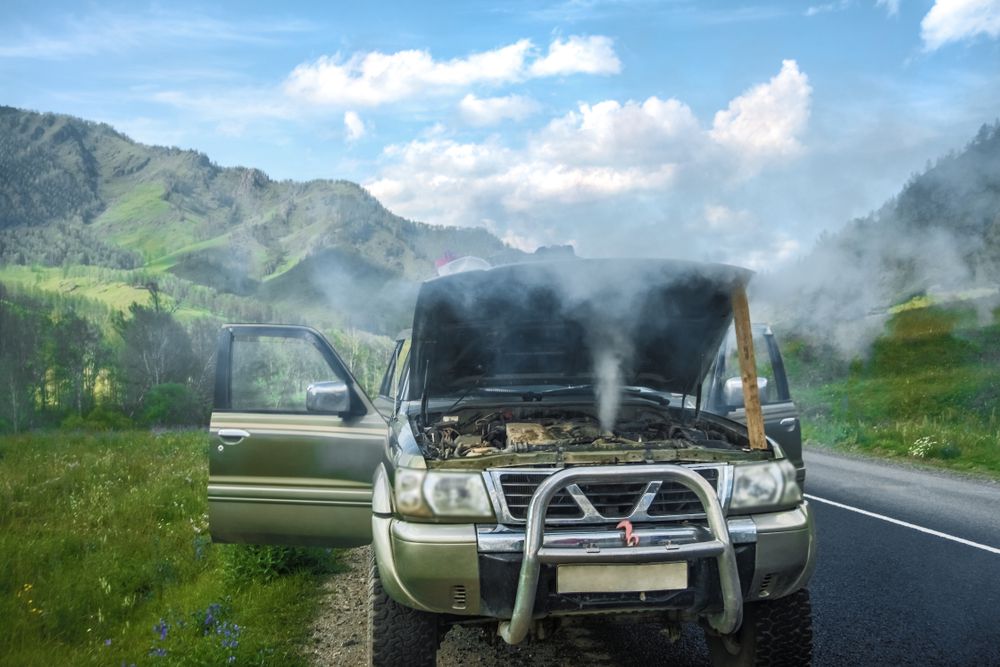 Overheated car on the side of the road
Overheated car on the side of the road
How To Tell That Your Car Is Overheating?
First, let's explore some of the tell-tale, as well as the not-so-obvious, signs that a car is overheating:
Symptoms of an overheating car engine:
temperature gauge rising
the dashboard displays a check engine warning light or a warning light for the engine temperature
steam coming from the radiator cap
Reduced horsepower or difficulty accelerating
Significantly reduced fuel efficiency
leaking coolant
low coolant level
the air conditioner is not working correctly
What Causes Engine Overheating
Problems that cause a car engine to overheat are usually problems with the engine cooling system, including:
faulty radiator cap
broken water pump
a defective or stuck thermostat
clogged coolant hose or radiator
malfunctioning radiator fan
low coolant level
blown head gasket
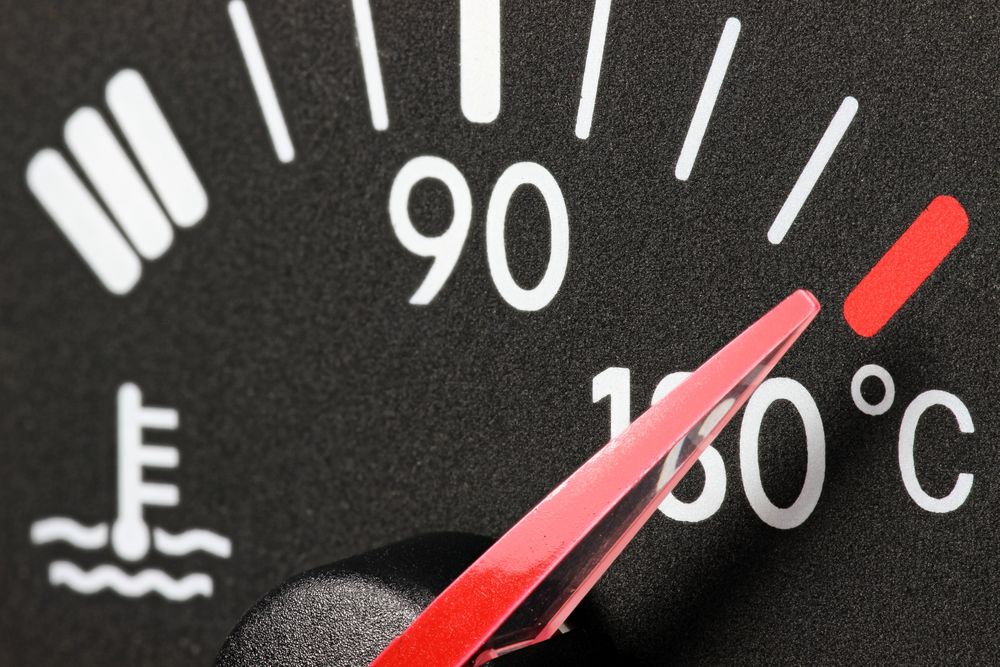 Temperature gauge on the dashboard in an overheating car
Temperature gauge on the dashboard in an overheating car
How Long Can You Drive With Car Overheating?
A malfunctioning or overheated engine is not something that you can ride out. Severe engine damage can result.
You need to get this issue diagnosed and fixed as soon as possible, which means you may need roadside assistance and a tow.
In general, you shouldn't drive an overheating car for more than 0.25 miles; however, it depends on a few circumstances, such as what is causing the car to overheat. You may be able to limp it a bit farther by keeping a close eye on the temperature gauge, pulling over, and stopping the engine whenever the car engine temperature gets too high.
The typical car engine operating temperature is between 195 and 220 degrees Fahrenheit.
Can You Drive A Car When The Engine Is Overheating?
You can drive with an overheated car engine but with extreme caution.
The smartest thing you should do is park somewhere safe and call a tow truck.
If you decide to drive, you must keep an eye on the temperature gauge and ensure it doesn't exceed 220 degrees Fahrenheit.
When you drive with an overheating engine, you risk causing significant engine damage.
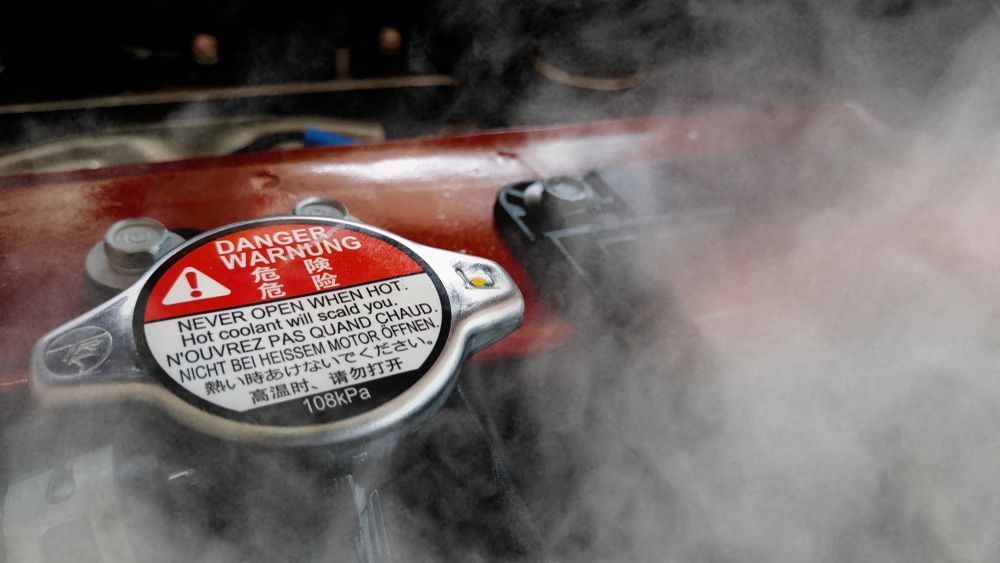 Caution: never remove the radiator cap while the engine is hot. Severe burns could result.
Caution: never remove the radiator cap while the engine is hot. Severe burns could result.
What Happens If You Keep Driving An Overheated Car?
Some of the most common things that occur when you drive too far/long on an overheating engine include:
Warped or melted engine cylinder heads
Warped or melted engine block
Cracked or broken engine block
Compromised engine performance
Blown head gasket
Busted radiator hoses
Damaged wiring
Damaged seals and gaskets
Broken catalytic converter
Broken exhaust manifold
Damaged welds
Damaged belts
Damaged sensors
A blown head gasket is one of the worst things that can result from driving with an overheating engine.
Blown head gaskets are expensive to fix (average cost of $1,985).
How Can I Temporarily Fix My Overheated Car?
If you notice the temperature gauge on your car starting to rise, there are a few methods you can try that will help mitigate the overheating problem, at least long enough to get to a repair shop.
You may be able to temporarily fix an overheating car engine by:
Turning on the heater to blow excess warm air into the cabin and away from the engine
Make sure AC is off
Adding more coolant to its coolant reservoir tank (no more than 50-60% coolant to water)
Pull over, turn the car off, let it cool off, then restart it from cold as you get it to a mechanic
What Is The Fastest Way To Cool Down A Car Engine?
The best way to cool down a hot running engine is to turn off the AC and crank your heater to the max. Your heater will pull the heat out of the coolant and blow it into the car.
What To Do If Your Car Is Overheating?
If your car is showing signs of overheating, safely pull over (if you're driving) and turn off your engine.
It's highly recommended to call a tow truck immediately.
Before you examine anything under the hood or look for the root of the problem, allow your vehicle to cool down.
NOTE: There is a high risk of severe burns if you don't wait until the engine has cooled off before opening the radiator cap.
Check around the engine, radiator, and coolant hoses, and look under the vehicle for coolant leaks.
If you're sure the cooling system has cooled off sufficiently(after waiting at least 15 min), you can open the radiator cap and check the coolant level.
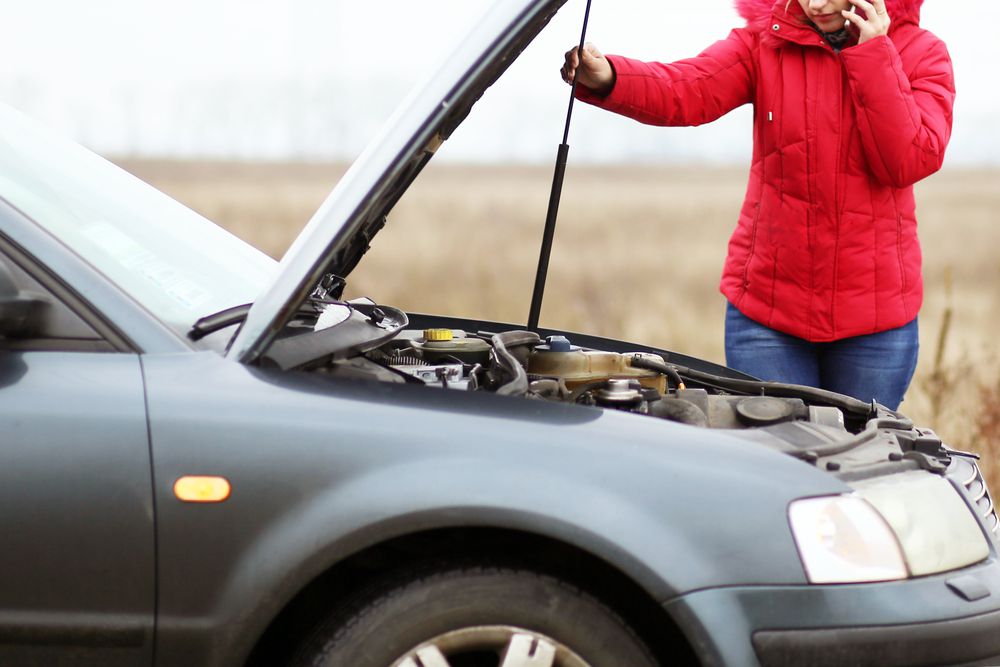 Call roadside assistance for a tow truck in the event your vehicle overheats
Call roadside assistance for a tow truck in the event your vehicle overheats
Can I Pour Water On My Engine To Cool It Down?
You could pour water on an engine to try and cool it down, but it wouldn't significantly help, and you may damage engine components.
How Long Does It Take For A Car To Cool Down Completely?
On average, a car will not completely cool down in less than 30 minutes.
Exercise extreme caution when inspecting the cooling system for problems on a warm engine. You can get severely burnt by a hot coolant.
How Do I Know If My Engine Is Damaged From Overheating?
Signs that your engine is damaged from overheating include:
Milky Oil Or Brown Coolant
Overheating an engine may lead to a damaged head gasket. The head gasket is
held between the engine's cylinder heads and the engine block, providing a
barrier between the cooling and oiling systems.
To check for a head gasket leak, you can inspect your engine oil by opening
the oil cap or pulling the dipstick. If the oil is milky, it signifies that
there is coolant in the oil. Likewise, if the engine's coolant is brown or
sludgy, it points to oil contamination.
With a small head gasket leak, the car may run for a short while; with a
bad head gasket leak will not run.
If you have a head gasket leak, you should take your vehicle to a mechanic
as soon as possible.
Leaks From The Cooling System
If the engine overheats, it can cause leaks in the cooling system. Gaskets and seals, especially older ones, may be comprised by extremely hot coolant.
Even older coolant hose may develop pin holes from abnormally hot coolant.
Engine Won't "Run Right"
Overheating an engine may cause many problems like valve damage, damaged rings, engine ticks, problems starting or loss of power.
A common refrain is, "My engine overheated and hasn't run right since."
How Hot Can Your Engine Get Before Damage?
Depending on how hot your engine gets when it overheats, it can experience varying levels of damage to its components.
In worst-case scenarios, an overheated engine can reach extra-high temperatures (more than 100 degrees above the normal temperature range of 190-220 degrees F).
This temperature range can lead to extreme damage, warping of engine parts, and a long-term compromise in engine performance.
If your engine only overheats to about 60 degrees above the normal range, it can experience moderate damage.
Damage in this temperature range may include damage to the piston rings and engine bearings.
But if your engine has only overheated slightly (less than 40 degrees above the normal range), you may get away with minor damage.
Minor damage may look like small cracks in the pistons or broken piston rings.
How Much Does It Cost To Fix An Overheated Engine?
Engine repairs due to an overheated engine can be costly.
Small repairs like these range between $200-$400 on average.
But if your overheated engine has led to a blown radiator, piston damage, or cylinder head damage, you'll be paying much more for repairs.
On average, you can expect to pay around:
$1,350 for cylinder head replacement (parts + labor)
$1,985 for head gasket replacement (parts + labor)
$1,050 for radiator replacement (parts + labor)
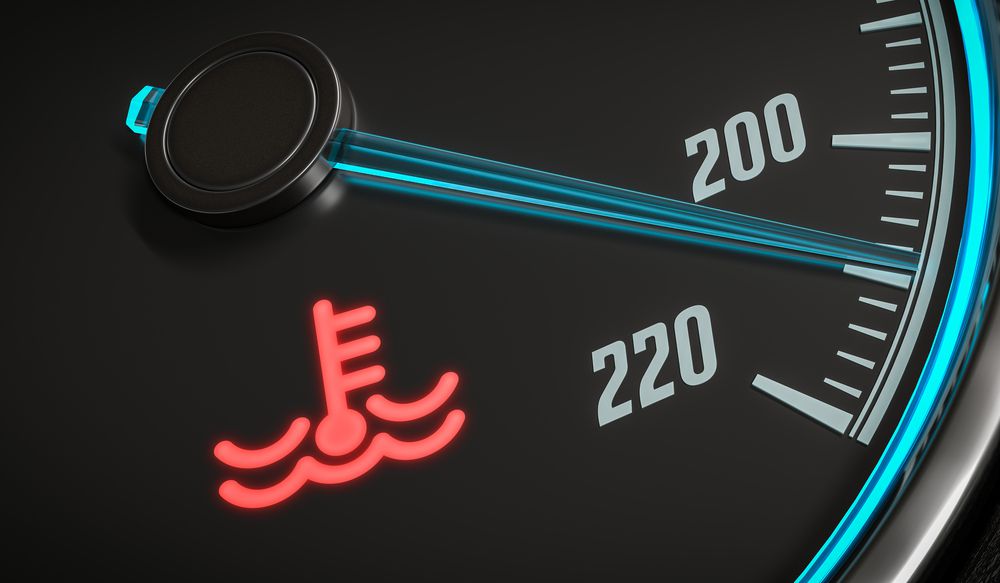 Oveheating temperature gauge
Oveheating temperature gauge
Concluding How Far Can You Drive An Overheating Car
Hopefully, our guide explaining how to drive an overheating car safely has answered your questions like how long can you drive with car overheating?
You can't drive an overheating car for more than a quarter of a mile without risking long-term damage to the engine, radiator, and other components.
You should get to a repair shop ASAP, even if it requires a tow so that you can diagnose the issue and fix any damaged parts.
For a temporary fix for an overheating car, your best bet is to cool down the engine by ensuring the AC is off and cranking the heat in the cabin.
FAQ
Can An Overheating Car Catch Fire?
An overheating engine won't directly cause the car to catch on first.
How Far Can You Drive With Water In Radiator?
Occasionally, people will fill their radiator with water in a pinch if there is a problem with a lack of coolant.
This is okay in an emergency, but you shouldn't drive for more than a day or so like this, or else the water will evaporate, and your engine will inevitably overheat without coolant.
Water will also cause oxidation (rust) problems in your engine's internals.
Get some coolant in with your water (50:50) so the radiator works appropriately as soon as possible.
Why Is My Car Overheating But It Has Coolant In It?
A lack of coolant isn't the only reason a vehicle can overheat.
If your car has coolant but is still getting too hot, it could be that the coolant is leaking, the coolant hose is clogged and not passing fluid, the water pump is bad, or the radiator is malfunctioning.
References
https://repairpal.com
https://www.bowersautomotive.net
https://www.autozone.com
https://repairpal.com
https://www.cashcarsbuyer.com
https://repairpal.com